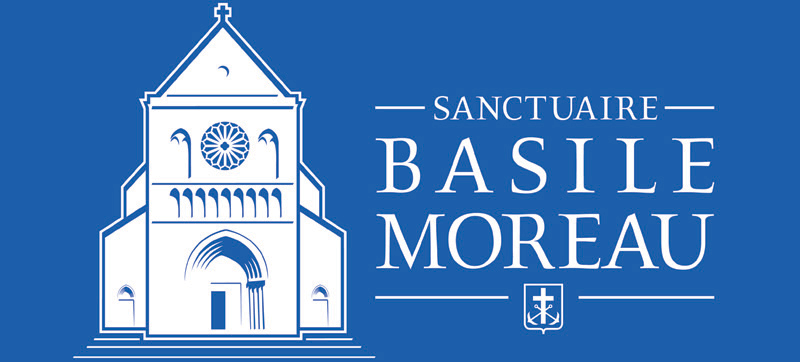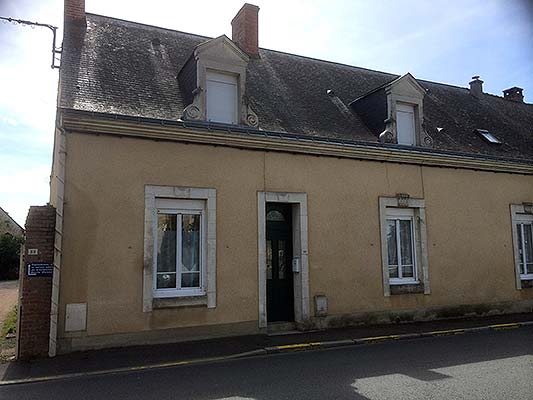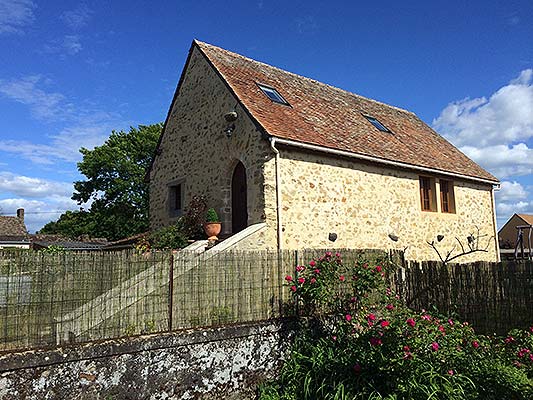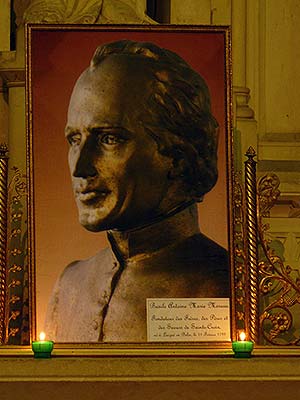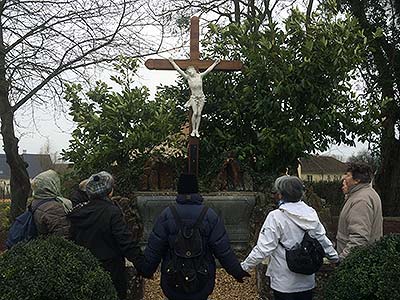Laigné-en-Belin
Situated about 15 kilometers to the south of Le Mans is Laigné-en- Belin, the village where Basil Moreau was born on February 11, 1799. He was the ninth of 14 children born to Louis and Louise (Pioger) Moreau, who were married in Laigné-en- Belin on February 12, 1784.
The early years
Basil’s father, Louis, was a modest wine merchant, who also cultivated some fields and kept cows, which the children watched over in the meadows. Young Basil took his turn watching over the cows, while at the same time learning his lessons.
The house where Basil Moreau is said to have been born is privately owned and has been renovated since the Founder’s time. In the courtyard, an old building (the wine cellar), also now privately owned, retains the appearance it had when Monsieur Moreau used it to store his wine. The first floor (American second floor) served as living quarters, usually for the young boys of the family. Basil may have slept there.
Father Moreau’s first biographer, Charles Moreau, writes: “Fear of God, love of the Church, prayer in common, a hard-working life, filial obedience, respect for all authority were for Louis Moreau and his virtuous wife family traditions which they tried to hand on to their children as the best part of the family inheritance. In fact, they had no other means of satisfying their many obligations, after their trust in God, than a little property which Louise Pioger cultivated while her husband sold wine in Le Mans and the surrounding regions.”
The parish of Laigné
The parish church, dedicated to Saint Martin of Tours, is not the one Basil Moreau knew in his youth. The current church was consecrated in 1867 – a ceremony at which Father Moreau was present. In the two transepts are windows that were saved from the old church and which were gifts from Father Moreau in 1846 on the occasion of the 25th anniversary of his first Mass in Laigné. On the bottom of each of the windows, which depict events related to the parish patron, one can see an inscription with the name of Moreau and the first seal of the Congregation of Holy Cross (an anchor with the hearts of Jesus, Mary, and Joseph). These two stained glass windows were made at Notre-Dame de Sainte-Croix.
Two other windows in the church, dedicated to Saint Basil and Saint Anthony (Father Moreau’s patrons), date to 1854 and were also saved from the old church. These were among the first windows to be made by the stained glass window workshop of the Carmel of Le Mans. They were gifted to the parish in honor of Father Moreau, who had given his own stained glass workshop oven to the Carmel, once Notre-Dame de Sainte-Croix stopped the production of windows in 1851.
One can also see a keystone in the church nave, with the coat of arms of the Congregation of Holy Cross.
The village of Laigné
On entering the village of Laigné, one can visit the site that once served as the local inhabitants’ common washing place. While the current basin dates from the early 20 th century, it’s likely that this was the site of a pre-existing washing place, where, in the late 18 th and early 19 th centuries, Louise Moreau would have come to do her family’s wash.
A bit further along the same path, one can see the village “calvaire” – a traditional Christian monument, which consecrates the entry to most French villages. It is said that the large stone altar on which the crucifix at the entry to Laigné is mounted, had served as the principal altar in the old (pre-1867) church of Laigné. Could this be the altar at which Father Moreau celebrated his first Mass in 1821?
From the baptismal records of the parish of Laigné, one reads:
“On February 11, 1799 (23 of Pluviose of the 7th year – registered on the 24th), was born Basile Antoine, legitimate son of Louis Moreau, merchant in this borough, and of Louise Pioger, his spouse, married in this church about 13 years ago, and was baptized by us, M. Guyon, Catholic priest, on the twenty-first day of this month of February. He had as his godfather René Bailleul, cartwright, resident of the borough, and as his godmother Marie Moreau, his sister. The father was present.”
Basil lived with his parents in Laigné until the age of 15, when he left home to board at the college seminary of Château-Gontier.
